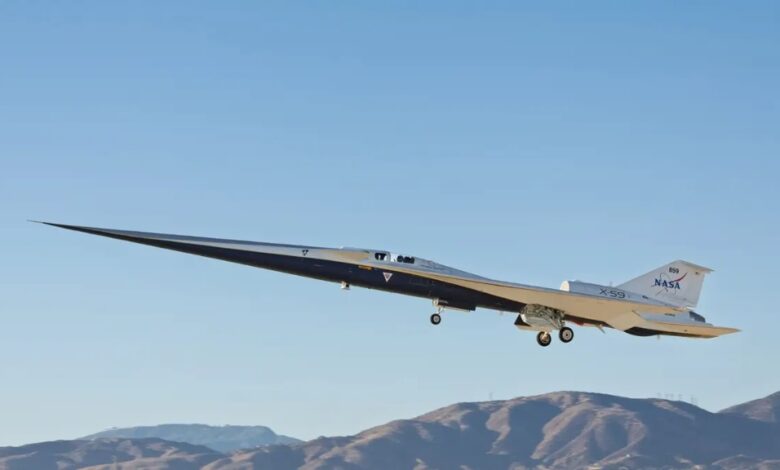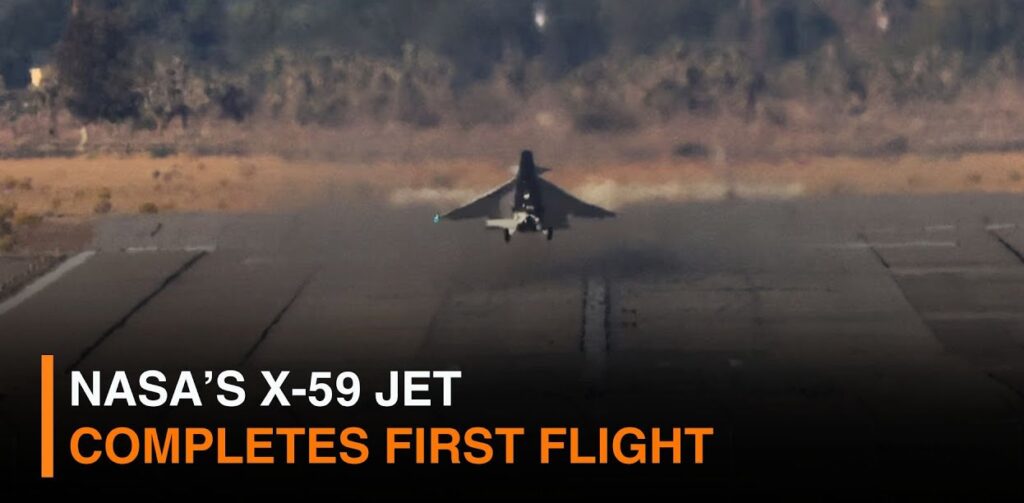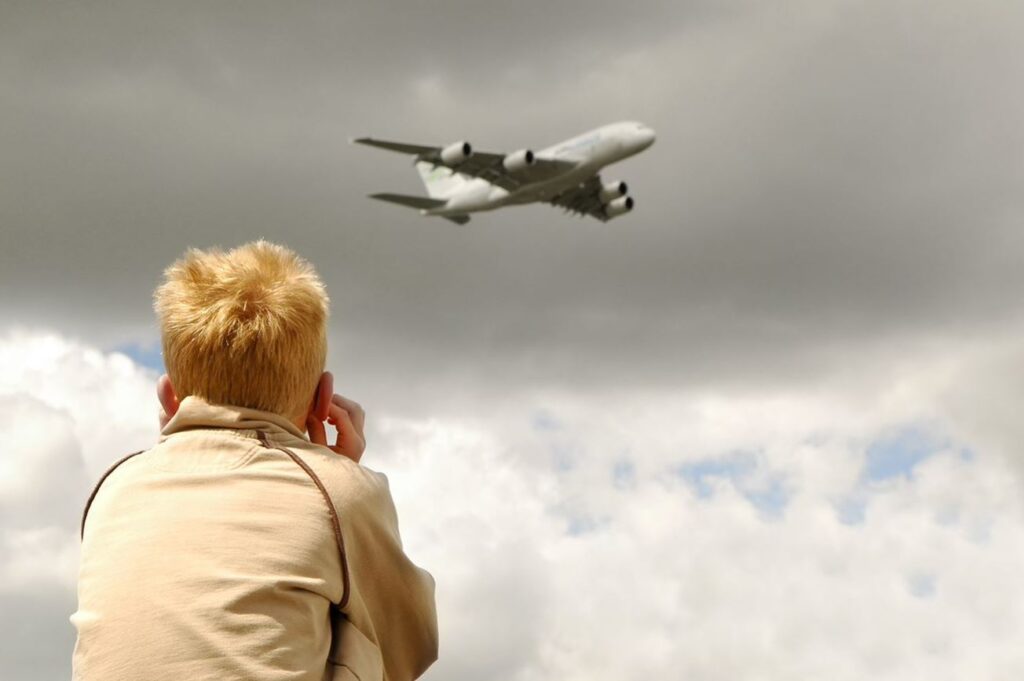NASA LAUNCHES ‘QUIET SUPERSONIC’ REVOLUTION: X-59 JET MAKES HISTORY

Breaking the Noise Barrier: Lockheed Martin-Built X-59 Eliminates Supersonic Flight’s Biggest Obstacle
PALMDALE, California – A new era in aviation has begun. The U.S. National Aeronautics and Space Administration (NASA X-59 Supersonic), in collaboration with Lockheed Martin’s renowned Skunk Works division, successfully completed the first flight of the experimental X-59 Quiet SuperSonic Technology (QueSST) aircraft. This pioneering jet aims to solve the core problem that has grounded commercial supersonic travel for decades: the disruptive sonic boom.

🛫 MAIDEN FLIGHT AND CORE OBJECTIVES
The X-59, the focus of NASA’s Quesst mission, took off from Palmdale on October 28, 2025. Following a successful one-hour flight to check its systems, the single-pilot aircraft landed safely. The test pilot confirmed the plane performed exactly as expected.
- Initial Test: NASA conducted the first flight at subsonic speeds to verify the aircraft’s structural integrity and system operation.
- Final Speed: The NASA X-59 Supersonic jet will eventually cruise at Mach 1.4 at an altitude of 55,000 feet.
- Silence Breakthrough: The plane is designed to reduce the loud blast of the sonic boom to a sound equivalent to a “gentle thump” heard on the ground.
🔇 THE DESIGN SECRET: HOW IS NOISE SUPPRESSED?
The X-59’s unique structure holds the key to this NASA X-59 Supersonic achievement. The jet’s innovative aerodynamic shaping prevents shockwaves from merging, thereby eliminating the boom.
- Long Nose: The jet’s extremely long, pointed nose makes up almost one-third of its total length. This design disperses the pressure waves that typically create the loud explosion.
- Digital Cockpit (XVS): The extended nose obstructs the pilot’s forward view. Therefore, pilots navigate using the eXternal Vision System (XVS). This system is a 4K digital screen that displays merged footage from external cameras. The first flight confirmed the perfect functionality of this “digital eye.”

🌐 ENDING THE COMMERCIAL FLIGHT BAN
The US banned commercial supersonic flight over land in 1973 due to intense public complaints about the noise. Consequently, the ultimate goal of the X-59 project is to overturn this ban.
- Community Testing: NASA will fly the X-59 over selected US communities. Thus, they will gather crucial data measuring the public’s perception of the quieter sound.
- Regulatory Change: NASA will present this data to national and international regulators. If the X-59 proves that silent supersonic flight is viable, authorities will establish new noise thresholds.
- Travel Impact: Lifting the ban could cut travel times, such as a New York-to-Los Angeles flight, by half. Ultimately, this will open the door for a new supersonic aviation industry.






